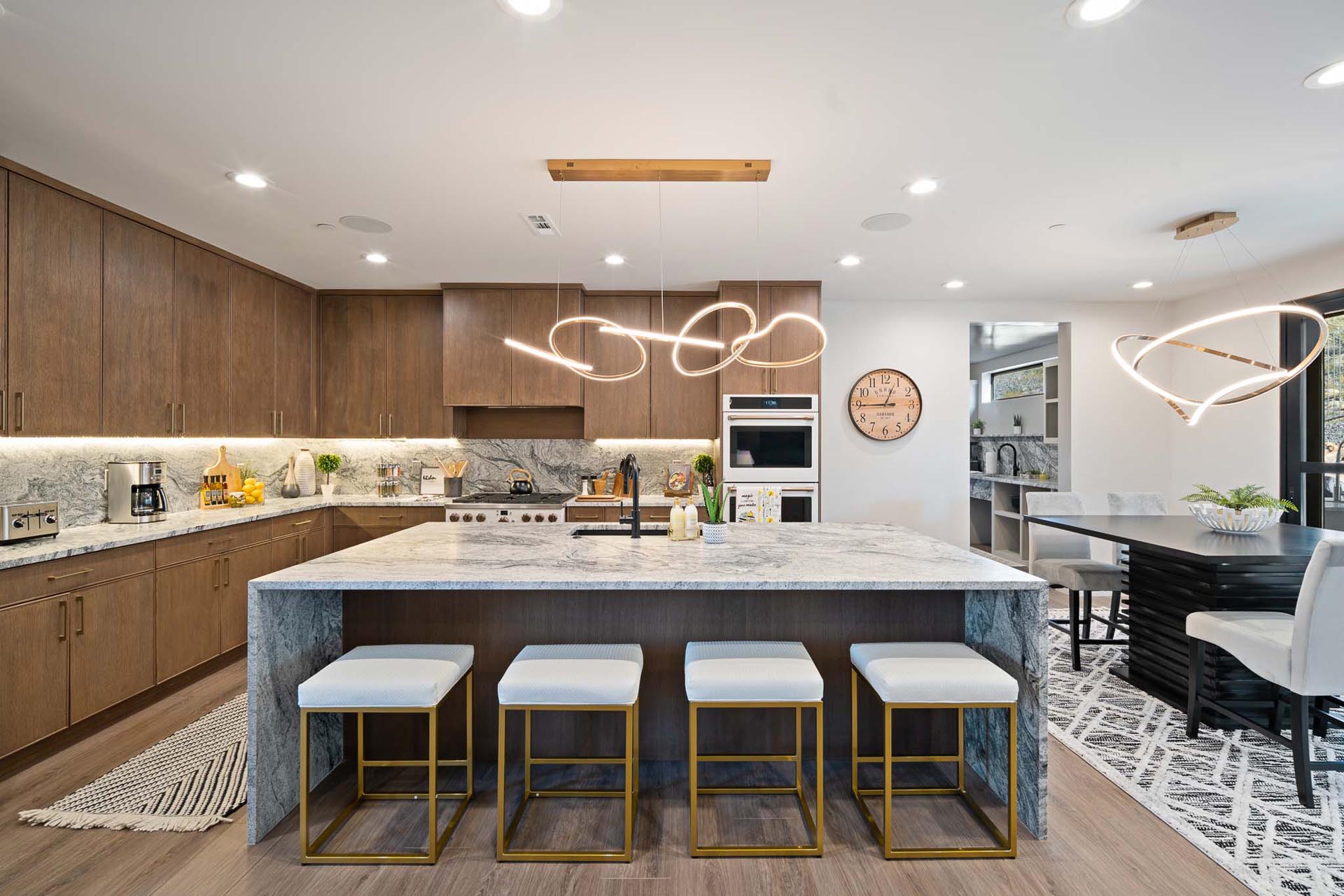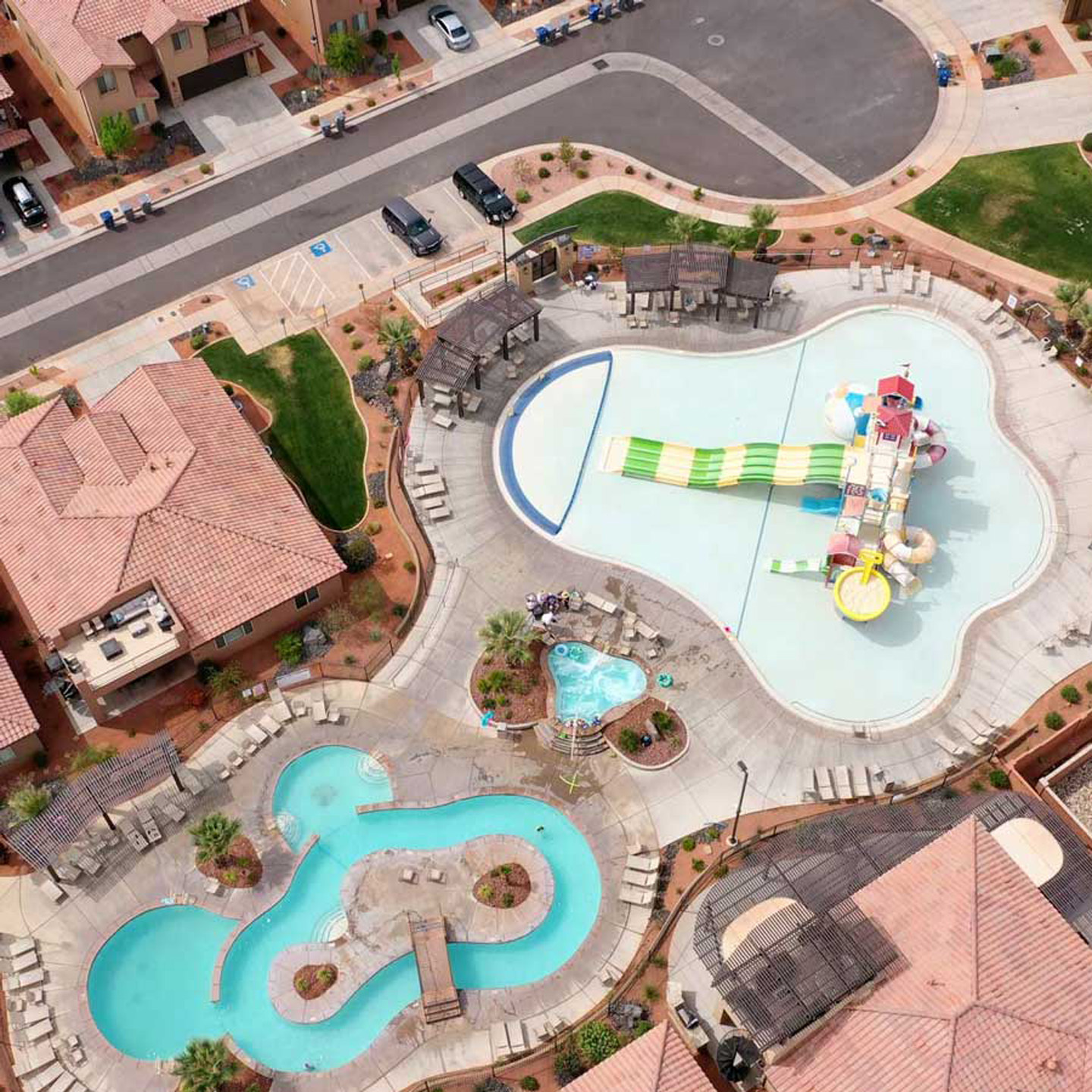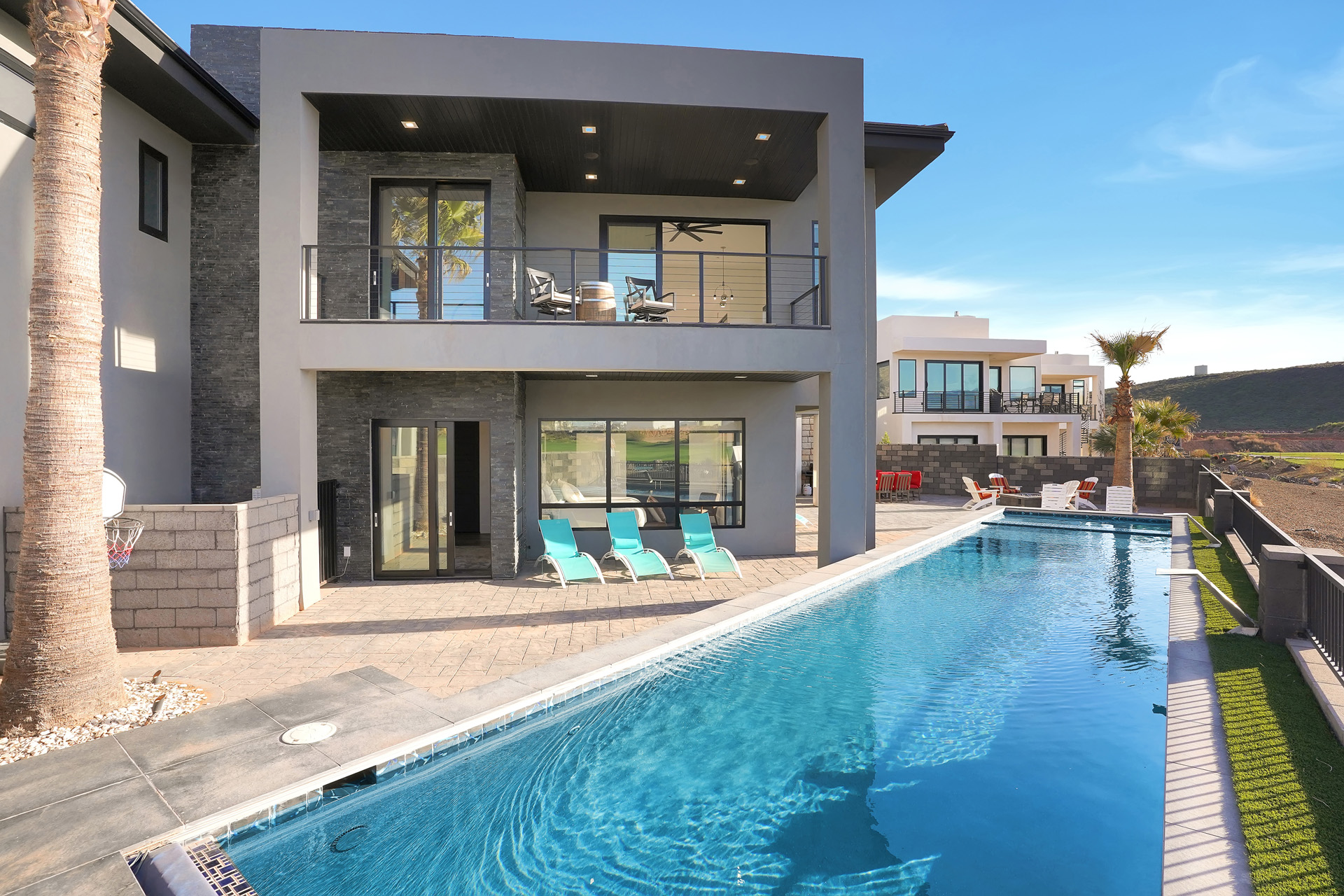But remember, your goal isn’t simply to buy your first rental property, it’s to keep it and to build a viable business as a real estate investor. In this article we’re diving into a topic that’s on everyone’s mind, how to get your first vacation rental in St. George Utah or any of the surrounding areas. We often get questions about our experiences as real estate investors, both as a flippers, adn vacation renal manager, and thought a condensed step-by-step guide would be the easiest way to help you enter the real estate game and vacation rental game. This article will primarily focus on the rental side of our experiences. Real estate has been our primary wealth builder for us us since 2011, and we believe it is one of the best ways to achieve financial freedom for you too.
So let’s dive in and explore the essential steps from financial requirements to evaluating potential investments. So you can start your real estate journey as well. So let’s keep it simple. Let’s set the groundwork. Four amazing reasons why rental properties are an excellent investment freedom. Imagine a world where you don’t need to wake up early every single day, commute to work or make other companies rich. Instead, picture a life where you have the time and financial freedom allowing you to do what you love to do with the people you actually like achieving. This sounds like a dream. Well, we can tell you it doesn’t just have to be a dream.
Monthly Cash Flow
Vacation Rentals offer an amazing investment monthly cashflow. As long as you do it right, rental properties can provide you with a consistent stream of income each month. Think of them as small money generators, continuously producing cash that you can use to continue to grow your new business.
More leverage
Vacation Rentals offer amazing investment leverage. You can use loans to purchase rental properties, meaning you don’t need to have all the cash up front. This allows you to invest even with limited capital and potentially giving you a huge return on investment that is well beyond what your cash equivalents could ever produce.
Appreciation
Appreciation. Over time, rental properties tend to increase in value, Utah and southern Utah in particular is very hot real estate mark. St. George has exploded in growth in the past 5 years so not only do you have the ability to earn a consistent income, you’re also building wealth as the value of your house increases and you pay down the mortgage.
Tax Benefits
Tax benefits. Owning rental properties offers numerous tax advantages, potentially allowing you to reduce or eliminate taxes on your rental income altogether. Now let’s dive into the 10 steps of acquiring a vacation rental in St. George Utah.
10 essential steps to acquire your first vacation rental.
Step One
Step one, save, save, save, save. This is your foundation and the first crucial step is ensuring you have the necessary down payment, closing costs and emergency fund down payment. That’s the one that you’re familiar, but what you might not be aware of is that for an investment property, most lenders require a down payment of around 15 to 20% of the property’s value. That means for every a hundred thousand dollars, you’ll need to invest between 15 and $20,000 of your own money. Of course, if you’re considering buying a property for yourself as a primary residence, you might be able to get away with as little as one to 5%, but it’s often recommended to have a more substantial down payment for security.
Keep in mind that the amount you’ve saved or plan to save will significantly influence the type of property you can invest in. So having flexibility there is also a great strategy. In addition to the down payment, you will need the closing costs, some of which include legal fees, title search, home inspection, land transfer tax lender and escrow fees, and other miscellaneous expenses. Typically, it can range from one to 4%, which is quite a variation, but largely depends on the purchase price of the home and whether land transfer tax is applicable. You can go online and check out whether land transfer tax exists in your area or your lender or realtor should be able to help you with that. It can be tens of thousands of dollars, so it’s worth doing a quick Google find to see if it applies to you. And last but certainly not least, you’ll need to save an emergency fund.
Remember 911, the 2008 housing crash and covid, all of these crises happened within a very short period of time, and unless you’re buying a property outright, which is very rare and emergency fund is key, it will provide a buffer between you and the possibility of losing everything the next time a big crisis hits. And because of the dynamics of the landlord tenant relationship, I’ve had some very good experiences and some very bad experiences. I keep a six month emergency fund that will cover all the monthly expenses plus an additional five to $10,000 for unexpected issues. I know it probably sounds like a lot to save, but remember, your goal isn’t simply to buy your first rental property, it’s to keep it and to build a viable business as a real estate investor.
Step Two
Your credit score and taxes are either a bridge or a brick wall between you and that mortgage you need. Unless you’re buying a rental property outright with cash, which I don’t, you’ll need a mortgage. And in order to secure a good loan, you want to work on improving your credit score. Ideally, a credit score above 700 is preferred as this can help you get the best interest rates. Lenders offer the best rates to borrowers with scores in this range because the lender would deem the risk to be lower. If your score falls below that, you will be considered a riskier borrower resulting in a higher interest rate, which ultimately translate into less money in your pocket each month. So make sure you’re paying everything on time as it affects your bottom line. The other thing is your taxes.
Lenders typically review your tax returns from the last two years calculating the average income during that time to determine your loan eligibility. They also usually require two to six months of bank statements, proof of employment income, and any other financial assets or liabilities, including investments or any cash that you’re holding in a bank account. It’s essential to be transparent with your income on your tax returns as aggressive deductions might lead to lower reported income, making it challenging to secure that loan you want so it’s wise to adjust your tax strategy accordingly. When planning for real estate investments. In other words, before I make any new property purchases, it’s a good practice for me to reduce my tax deductions to ensure I report a more substantial income to potential lenders. This provides an opportunity for me to qualify for a more substantial loan, which opens the door for a broader range of properties to choose from.
All because I can demonstrate a higher income this you will need to be proactive at because it really can help or really hurt come long time. I use a CPA and would recommend that you use a good accountant as well that can help you strategize.
Step Three
This of course, leads us into step three where you’re going to want to get pre-approved for financing. You can connect with a local lender or bank or my personal preference is actually to use a mortgage broker because I have found that they tend to have greater flexibility in negotiating interest rates. Getting pre-approved for financing helps you understand how much you can afford and show sellers and your realtor that you’re a serious buyer. Otherwise, I can guarantee you that this is a scenario that will unfold. You’ll start exploring potential properties and you’ll find one that seems absolutely perfect.
Once you’ve fallen in love with it and guaranteed it has cashflow, you decide to visit the lender and you’ll discover that the property is priced well above your budget and it will lead to great disappointment. So definitely consult with a mortgage lender before you proceed with any other actions, your lender is going to want to see all the necessary documentation such as your tax returns and bank statements. For me, the best approach has always been to get pre-approved for financing, not just pre-qualified. Getting pre-approved is them literally doing a full application, so you’re getting approved for a certain loan amount and then they simply need to approve the property after you’ve found one, making sure it fits their appraisal value. So basically they’re not going to loan you $200,000 for $150,000 house. This is better than getting pre-qualified, which is simply an exchange of information where you tell them your income and credit score and they say, based on this, we estimate you qualify for X amount of money.
Pre-qualified is not the same as being pre-approved. Pre-qualified is an estimate which can change once they start evaluating your documentation. Pre-approved is a true value and should avoid any hiccups or surprises after you’ve made your offer. Assuming the actual property value is in line with the purchase price, like I said, the bank isn’t going to loan you $200,000 for $150,000 house. This step holds immense importance for several reasons. First, it enables you to determine precisely what you can afford, thus avoiding any wasted time for both you and the other parties involved in pursuing properties that are beyond your budget. Secondly, if you find a property that you genuinely like having all your information readily available with the lender accelerates the process as they only need to verify the property.
Trust me on this, I speak from over 14 years of experience in this real estate game. Desirable properties tend to attract multiple interested buyers, especially if it’s an investment property with good cashflow and a good rental history. So being well-prepared puts you in a favorable position. This will also help your realtor negotiate on your behalf.
Step Four
Determine your market. Once you’ve spoken to a lender, you’ll have a range in which you can be searching for homes in, and now you can start by researching and choosing a location in which to invest. I prefer to invest in an area that I live. I also prefer to buy in a Vacation rental community that is zoned for Vacation rentals. Some investors have no hesitation about investing out of state or province, but I prefer to know what my market is firsthand rather than simply relying on another person’s input like a realtor in that area. This way I can understand whether there is crime in the area, if it’s low income or a nice family neighborhood and also reconiqze my self with all the laws that revolve around vacation rentals. Each city in Southern Utah has its own vacation rental laws which are always changing.
I can also be more aware of what happens politically and what changes may or may not occur with taxes and vacation rental laws. I have also found that having a rental more than an hour away can be a nightmare to drive to when issues arise. So it’s become a rule of thumb for me over the years not to buy a property more than an hour away. You’ll need to analyze the local real estate market to identify areas with great potential for returns. Part of your research will be learning what range of rent can be charged for a specific type of accommodation, like a three bedroom, two bath versus a one bedroom, one bath, as well as how an arrangement will affect this potential income. For example in Southern Utah rentals with pools and spa’s tend to have a higher occupancy rate and higher rents then those that don’t. Amenities mean everything when your trying to keep your rental occupancy rate booked.
Also, remember that real estate offers various investment options from skyscrapers to bungalows. I have only ventured into residential homes as rentals, so that’s what I’ll focus on sharing my experiences about. The key is to decide what aligns with your aspirations and learning from other successes and failures can help go a long way in helping to set clear objectives. As you are determining the area in which you want to invest, you’ll need to learn how to analyze properties.
Step Five
Master your deal analysis. You need to become proficient in analyzing deals related to your chosen real estate strategy because this is crucial for success in the rental game. Unlike many other investments, real estate actually allows you to make informed predictions because you can estimate property expenses, rental income, and future profits pretty accurately and understand things like cashflow. Knowing how to crunch these numbers effectively will help you identify great deals and avoid the bad ones.
In order to do this, you need to know what the costs are for ownership and what that includes, such as property taxes, which you should be able to see on the listing or get from your realtor insurance costs, which typically range from a hundred to $150 per month. You can actually call the utitlies companies and they will give you history for what previous cost where. Additionally, account for miscellaneous expenses like landscaping repairs, pest control, usually totaling around $150 a month, and I like to include a buffer of about a hundred dollars a month to cover unforeseen costs. And don’t forget to factor in vacancies as some months are slower then other months. For example, if my expenses total $2,400 a month, I want to allocate one $2,400 payment as a buffer for vacancies.
So $2,400 divided by 12 months is $200 per month for this. So my new baseline expense, what I would consider is $2,600 per month. You should aim for a minimum of 12% cash on cash return for your initial investment. So if you buy a $300,000 house with 20% down, which is $60,000, and another 3%, let’s say $9,000 in closing costs, your initial investment is $69,000. Generating a minimum of 12% on the $69,000 is $8,200 per year or $690 a month. So if my expenses for that particular property were a thousand dollars per month, I would need to make at least $1,690 per month in rental income to get this, my 12% cash on cash return. This should be your bare minimum. I like buffer, so I prefer to have 15 to 20% cash on cash return, but it does continue to grow every year naturally as you pay down some of the mortgage.
So let’s say for example, $6,500 of your principal was paid down at the end of the first year. So on your $300,000 purchase, if it’s a 25 year mortgage, your return on investment is now 6,500 for the principal paid down plus 82 80, which equals $14,780 on your initial investment of $69,000. So never purchase a property that doesn’t generate at least 12% positive cashflow. The goal is for the tenant to cover your monthly expenses as well as provide a buffer between you and ground zero. Remember, your goal isn’t simply to buy a rental property, it’s to become a real estate investor and develop a viable business. Patience is key when searching for a property with positive cashflow as it can be like finding a needle in a haystack, especially in a competitive market, stick to your financial criteria and be open to making reasonable offers based on the property’s potential for cashflow.
Step 6
You’ll want to examine as many properties as possible within your determined price range and consider even extending your search slightly, perhaps by 10% to view properties that are slightly above your budget. This allows you to make informed comparisons and lots of them. That way when you see the perfect place, you’ll know it immediately because you have lots to compare it to. Also, I have always used a realtor as they can often provide valuable insights and most can set up an automated email notification system that meets your criteria. But keep in mind, no one has as much of a vested interest in seeing you succeed. As you do so, as valuable as your realtor is, you need to be informed and knowledgeable about your market. Seeing a variety of properties provides valuable insight for you firsthand knowledge. If you see 15 to 20 viewings or more, you’ll develop a keen understanding of pricing, reasonable upgrades and the condition of properties in the area.
This knowledge is vital because it ensures you recognize an excellent deal when you encounter one and prevents missed opportunities if you have nothing to compare them to at this point. Some may suggest exploring out-of-state options, especially if you reside in an expensive area. This can be a viable choice depending on your circumstances, but like I said before, I personally prefer investing in areas where I can closely observe day-to-day developments. This way I can easily identify population trends, investment patterns, and witness changes firsthand, which gives me a competitive advantage. Investing out of state carries its own set of risks, mainly centered on relying on other people’s judgment. It’s crucial to fully comprehend any investment, so keep that in mind if you choose to invest in a different location. In my case, I target properties within the median price range. This strategy maximizes the potential buyer pool and allows for more significant upside potential when renovating.
Additionally, it increases the appeal of the property for potential renters ensuring a larger pool of interested tenants. I also tend to avoid condos in my experience. They often offer limited room for appreciation, making them less attractive investments. You typically can’t expand the square footage or easily change the layout, and you’re subject to the rules of the homeowner’s association, HOA, which can also eat into your profits through h o a fees. And when I want to do something to my property, I don’t want to wait on a board of members to decide whether I can repaint my front door or something. I want control instead, I prefer residences like duplexes or triplexes, all of which fall within the range of two to three units. Opting for properties with two to three units enables me to qualify for a conventional financing, which often comes with lower interest rates, more favorable mortgage terms, and a better resale value when it’s time to sell.
It can also be a lot faster to get approved for the mortgage rather than going through a more lengthy commercial application. I explore properties in need of minor cosmetic enhancements because there is greater potential for increased value. Ideally, aim for a home where all the essentials but unseen aspects like the roof foundation, insulation, plumbing, electrical, the expensive stuff are in good shape. However, the cosmetic appearance may be dated or dirty. Other aspects such as an outdated kitchen, bathroom, flooring or peeling paint are relatively easy and cost-effective to renovate within a reasonably short timeframe. Investing a certain amount in renovations can significantly boost monthly cashflow and present a substantial return on investment. When starting out, you may not initially know which upgrades to prioritize what’s typical for the area or what the associated costs are. Nonetheless, the more experience you become, the more you’ll quickly grasp specific renovations that yield the best R o I.
And like I said before, checking out a number of properties like 20 or more will help you understand what to prioritize. From there, I recommend finding reputable contractors who can provide estimates for the renovation or remodeling costs. I typically obtain three to five bids depending on what it is, so I can have an accurate understanding as to what is a normal price range for a particular job. And check reviews, not just the stars, but actually read the reviews. They can give you valuable insight into the contractor’s reliability and skills. And when meeting with contractors, don’t hesitate to ask them numerous questions, seeking their advice and recommendations, because even if you end up choosing a different contractor, you may get a stellar idea that you end up implementing. Gathering multiple opinions and insights from different professionals will enhance your understanding and decision-making. When it comes to the renovations, they might have had a layout or a Reno idea that you’ve never considered, and sometimes it can be super helpful.
Be prepared for costs and timelines to exceed the initial estimate budget accordingly. This is crucial because in my experience, renovations tend to cost about 20% more than the initial amount and take about 20 to 30% longer to complete, especially if things get held up on permits. Hey everyone, I hope you’ve enjoyed this video so far. If you have, please hit that subscribe button and leave a comment below, letting me know that you have subscribed, and I’ll be sure to reply to you. Prioritize making it as renter friendly as possible by avoiding overly expensive and fragile materials or finishes. Instead, offer durable and easily maintainable options. For instance, consider luxury vinyl plank flooring over high-end hardwood floors, sturdy countertops over delicate ones and tile floors in areas that are prone to high traffic, and stating the obvious. Avoid carpeting as it requires frequent replacement After each tenant turnover.
And remember, the tenants probably won’t care for the house. As you do so, avoid making costly improvements that you would be disappointed to have to repair or replace. And of course, location, location, location. It matters significantly. Choose properties wisely and be mindful that you can’t change a property’s location. Avoid purchasing properties situated near noisy freeways or trains or on busy streets with high traffic as well. Properties adjacent to large apartment buildings or commercial complexes can diminish their long-term value and resale potential. Selecting the right location is critical for maximizing your investment in the long run. If you think you found a good one, determine what the property’s cashflow would be. Not all properties are profitable investments and not all can generate positive cashflow. So you need to do the math to make sure it makes sense. Remember, you want at least a 12% cash on cash return on investment.
Step Seven
This is crucial and needs to be done before an offer is put in. So let’s assume you’ve got the cashflow and move on to step seven, making an offer. Once you’ve identify a promising property, work with your real estate agent to make a competitive offer. Be prepared for potential rejections and stay persistent. Consistency builds expertise and confidence in assessing properties. I make sure I make offers at a price that aligns with my financial objectives. If the price exceeds what makes sense for my investment strategy, I don’t become emotionally attached or take it personally when the offer isn’t accepted. Instead, I assess the numbers and make offers that align with my financial goals. And I also believe that a good realtor who understands the intricacies of contracts and negotiation strategies is key. A proficient agent can provide valuable guidance, and conversely, a poor agent can cause complications such as missed opportunities and financial losses. We are licensed Real Estate Agents in Utah who specialize in Vacation Rentals if your looking to buy in Utah give a call.
A good agent can also help you navigate the line between maintaining a balance between competitiveness and financial prudence. Avoid overpaying for a property due to the excitement of competition, but don’t mess out on a great deal by being overly stubborn about a few thousand dollars I’ve been there too. Sometimes paying a fair price for a right property is a wise investment quality, peace of mind, and a smooth transaction often justify a slightly higher cost. Additionally, consider paying a little bit more for a property in a desirable area as this can reduce the risks associated with lower end neighborhoods. After your offer is accepted, conduct your due diligence.
Step Eight
Inspect various aspects including the roof, electrical systems, plumbing, potential mold issues, the foundation and if applicable, a septic tank or well, generally the non-cosmetic issues are the more expensive ones, so the key is to scrutinize as much as possible and go in fully informed from these inspections, determine the estimated cost of addressing any issues that arise. Keep in mind that nearly every property, even those in excellent condition will have some issues uncovered during these inspections. It’s important to tally up the potential repair costs and then engage in negotiation with the seller seeking either a credit or reduction in the purchase price to account for these issues. Always make the request even if the seller initially insists on an as is sale without any credits. Most of the time, sellers are willing to negotiate, especially with a contract that’s already been accepted and it’s a risk-free step for you.
Step Nine
Now let’s proceed to step nine, which involves renovation. If you’ve acquired a property that doesn’t require any remodeling, feel free to skip this section. However, if you’re embarking on a renovation project, it’s advisable to commence work as soon as you’ve closed the property to minimize downtime. Word of mouth recommendations is a great way to find a reliable contractor. While I wait for a house to close, I’m completing all of my planning, so I will be buying and picking out materials, paint appliances, even if necessary, and I’ll make sure I have a contractor or a schedule in place for doing the work. Depending on what it is. When it comes to overseeing renovations, it’s imperative to be onsite regularly, ideally every day. This hands-on approach ensures you can address any unexpected issues or deviations from the plans or even mistakes very promptly.
Step 10
Contractors may sometimes overbook or shuffle their workforce, so your consistent presence help to maintain the project’s timeline. Now let’s explore a step number 10, renting out the property. This is a fun phase as you near the culmination of the real estate investment process to maximize your rental potential. I have learned that it’s wise to invest in high quality photography to showcase my rental. Additionally, respond promptly to inquiries from potential tenants as they’re often eager to view properties at their earliest convenience. There are so many places online that you can list your rental, but don’t overlook realtor.com as this can often be a place for higher quality tenants where they would be looking regarding tenant screening. I’ll create a dedicated video that covers this topic in detail, and here it is a bonus.
Step 11
Either way, you’ll need to ensure that the property runs smoothly, your guest are satisfied and your getting 5 star reviews, and you maximize your returns. And while the property is rented out successfully and your cashflow exceeds the expenses, remember the 12% rule, you can start saving for another property, and essentially it becomes a cycle where you begin expanding your real estate investment business. The more exposure you have, the more proficient you become. It’s important to acknowledge that building a multimillion dollar empire won’t happen overnight, and that’s a very unrealistic expectation. However, achieving substantial success over the next 10 to 15 years is entirely feasible. Just picture a scenario where you purchase a vacation rental every other year, and that’s all it takes.
We are the Vacation Rental Experts
Whether your looking to buy a vacation rental to manager yourself or looking for an investment to have a management company manage we can help. We know the ins and outs of all the vacation rental laws in each city here in Southern Utah. Not only can we help you purchase your vacation rental we can manage it giving you the maximum return possible. Give us a call at 435-352-1842 to start your Vacation Rental investment process.






